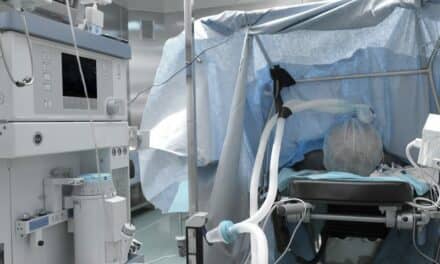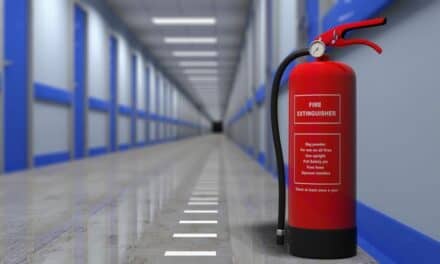Many HTM professionals come into contact with the National Fire Protection Association codes on a day to day basis whether they happen to realize it or not. Questions about NFPA 99 and NFPA 101, as they’re known, have also appeared on the CBET exam. I’m sure both documents could provide test questions for the new certified healthcare technology manager (CHTM) exam as well. In this installment of Prep Talk, we will try to expand your knowledge base for both these documents and explore how information from either code could show up on an exam, no matter which certification you might be seeking.
99 Versus 101
NFPA 99 is the Healthcare Facilities Code; NFPA 101 is the Life Safety Code. These codes have been adopted by the Centers for Medicare and Medicaid Services (CMS) and The Joint Commission (TJC), so they are enforceable by these organizations.
Most general biomeds have a better working knowledge of NFPA 99, since many of the electrical safety issues technicians encounter during their day to day duties are addressed here. NFPA 99 covers many other topics such as criteria for the performance, maintenance, testing, and installation of gas and vacuum systems along with IT systems, security, and electrical systems. NFPA 99 also contains information pertaining to emergency management programs.
NFPA 101, on the other hand, may be more familiar to those managing an HTM department. According to the NFPA Web site, “The Life Safety Code is the most widely used source for strategies to protect people based on building construction, protection, and occupancy features that minimize the effects of fire and related hazards.” This code is often used in planning and implementing a hospital construction plan. The document gives guidance on fire escape routes and many other construction and building safety concerns that affect occupants.
Authorities Having Jurisdiction
When discussing these codes with professionals in the field, I always seem to get questions about how to figure out which entity qualifies as the authority having jurisdiction (AHJ). The NFPA Web site defines the AHJ as “the person or office charged with enforcing the code,” whether it be NFPA 99 or 101.
However, identifying the AHJ is not always cut and dried: Depending on the situation, you may have several AHJs. A good rule of thumb for test taking, since these are NFPA codes, is to treat the state or local fire marshal as the AHJ. However, hospitals may have several AHJs, and all AHJs’ approval must be secured, according to NFPA.
For example, healthcare technology management (HTM) professionals may need approval from TJC or other accrediting agencies, state or local fire marshals, state healthcare licensing agencies, CMS, or possibly the facility’s insurance carrier. The bottom line for any certification exam is to remember that whoever is responsible for enforcing the code is the AHJ, and that healthcare facilities may have several.
NFPA 101 Applied
As mentioned earlier, NFPA 101 deals with the safety of occupants as it pertains to building construction. NFPA 101 has many codes dealing with fire safety, such as fire ratings on doors and fire egresses or fire escapes. Just as much of NFPA 99 deals with the different aspects of an electrical safety program, the 101 codebook covers fire evacuation or egresses in great detail. In this code, you would find specifications for the width and capacity of a fire exit along with the number of egresses required for certain occupancy levels. I like to use one of the frequently asked questions on the NFPA Web site to illustrate how an HTM professional implements this code.
Say your building has one more stairway than required by NFPA 101. Does this exit have to meet the same provisions as the other required stairs? Officially, NFPA 101 may say no—however, one of the AHJs may claim the stair is part of the required means of escape for an occupant who is on the stairs at the time of a fire alarm. If the AHJ agrees that the third stair is not required, then the specific code requirements for an official egress would not have to be met. In this case, the extra stair should be marked as “No Exit” and should not be used during an emergency or relocation drill. However, the best solution would be to upgrade the stair to meet all applicable codes when possible.
This is a good example of how this codebook might be applied. You may see questions like this one on the CHTM exam, but these concepts are probably too specific to be included on any of the other examinations.
For those who have very little knowledge about these NFPA codes, I hope you find this information helpful as you continue your pursuit of becoming a certified HTM professional.
John Noblitt, MAEd, CBET, is the BMET program director at Caldwell Community College and Technical Institute, Hudson, NC. For more information, contact chief editor Jenny Lower at [email protected].
Photo credit: © Sirawut Wisutipaitoon | Dreamstime.com
Quick Study
1) You are serving on a construction committee in your hospital, and the committee is charged with adding an MRI wing to the ground floor. During a committee meeting, another member brings up a concern about the architect’s plan, which removes a fire exit during the construction phase of the project. What document would need to be referenced to ensure compliance with the fire code?
a) NFPA 99
b) NFPA 101
c) NFPA 601
d) Joint Commission accreditation manual
2) Medical equipment electrical safety codes are primarily addressed in this document:
a) IEEE 601
b) NFPA 701
c) NFPA 99
d) Manufacturer’s service manual
3) A facility engineer asks you about the proper amount of suction provided at the station outlets in the ICU. What document should you reference for the proper information about the hospital vacuum system?
a) NFPA 99
b) NFPA 101
c) 21 CFR
d) IEC 8000:1
4) According to the NFPA, the authority having jurisdiction is the:
a) Hospital board of directors
b) Person or office charged with enforcing the code
c) Hospital’s risk management department
d) State fire marshal
Answers: 1—B, 2—C, 3—A, 4–B






One the most important sections of NFPA-99 is chapter 10, requirements for manufacturers. The key section here, defines exactly what a service manual is and requires that the manufacturer provide it to Biomeds. The best time a Biomed can ask an OEM for a factory service manual is as the salesman walks in the door and wants a Sticker so he can DEMO the device to caregivers. A Biomed you need to review the manual to get the knowledge you need to have to issue a valid sticker. Then retain that .pdf manual during the Demo period in case you need to refer to it. If the device passes by you, and into service, not only is that a major fail on your part, but the likelihood of that company providing that manual to you is drastically reduced. So use the NFPA-99 standard on service manuals as your backstop to insure that you have the factory service manuals you need to do your job. If every Biomed stopped every salesman at the door until a factory service manual was provided, our industry’s service manual problems would be solved in short order…